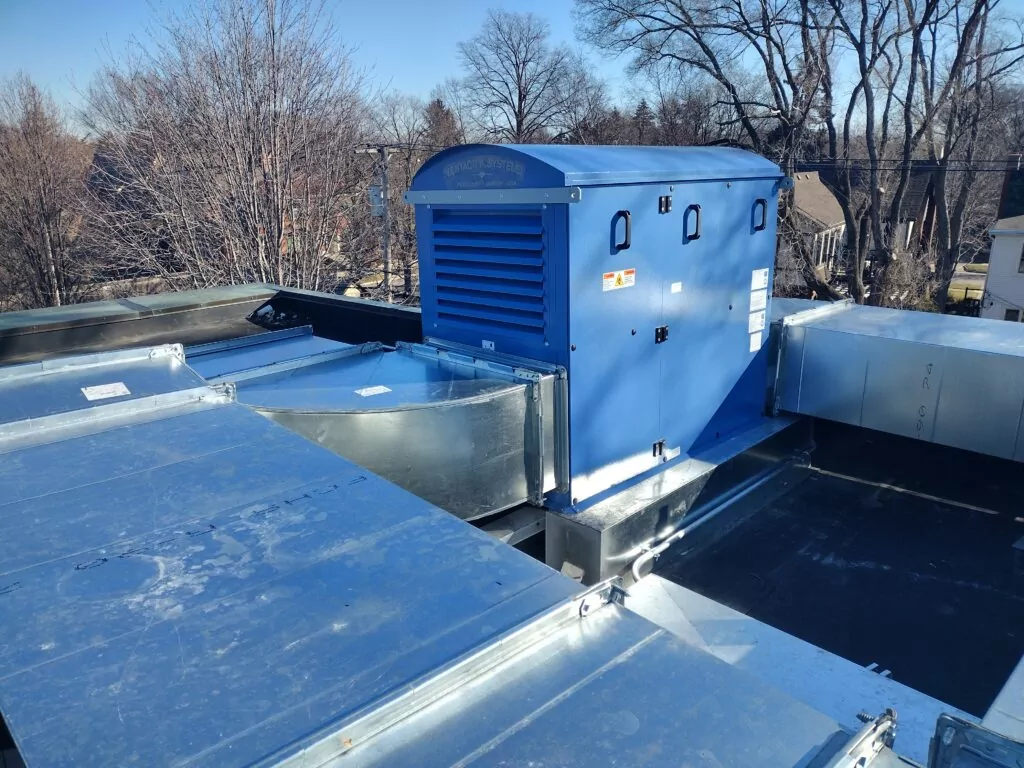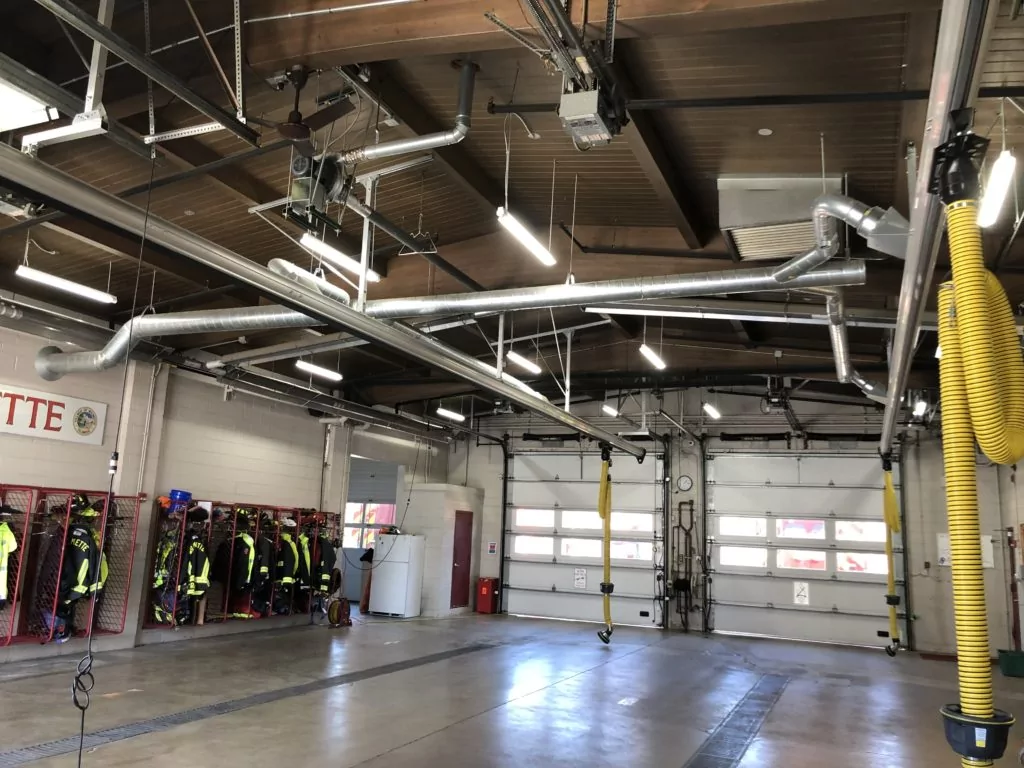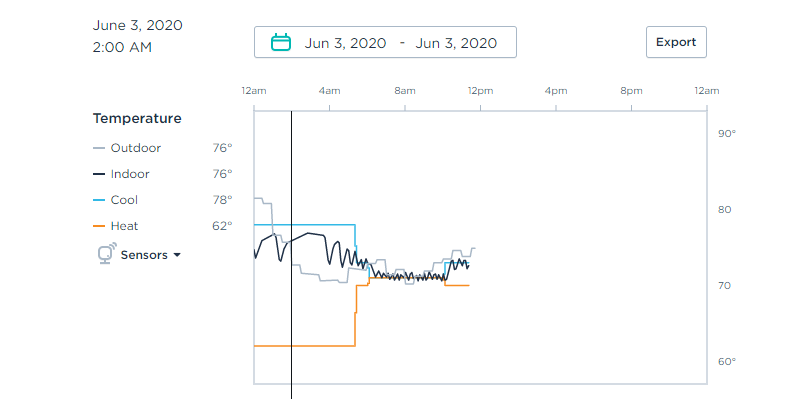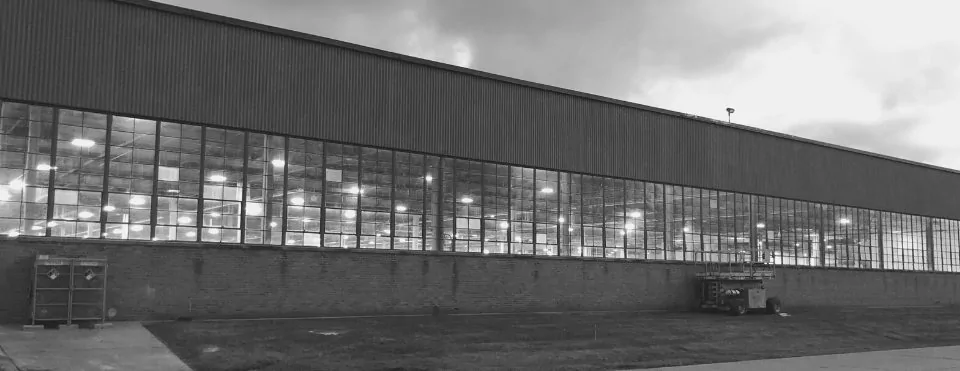HRV vs. ERV: What’s the Difference

Aug 22 2023
HRV and ERV are both types of ventilation systems that help to improve the air quality in your building. They do this by bringing in fresh air from outside and exhausting stale air from inside. However, there are some key differences between the two systems.
What is an HRV?
HRV stands for heat recovery ventilator. It transfers heat from the outgoing air to the incoming air, which helps to reduce the amount of energy needed to heat or cool your home. HRVs are a good choice for homes in cold climates, as they can help to prevent your home from becoming too cold in the winter.
However, in our climate in Illinois, we have very warm and humid summers, along with cold winters. For this reason, we need to keep moisture out of a building during cooling season. For this, an Energy Recovery Ventilator is a better choice (ERV).
What is an ERV?
ERV stands for energy recovery ventilator. It transfers both heat and moisture from the outgoing air to the incoming air. This helps to keep the humidity levels in your home more balanced, which can be beneficial for both your health and your home’s comfort. ERVs are a good choice for buildings in all climates, but they are especially beneficial in humid climates.
What are the Key Differences Between HRV and ERV:
| Feature | HRV | ERV |
|---|---|---|
| Transfers heat | Yes | Yes |
| Transfers moisture | No | Yes |
| Best for | Cold climates | All climates |
| Benefits | Reduces energy costs, prevents home from becoming too cold | Keeps humidity levels balanced, beneficial for health and comfort |
Which ERV or HRV system is right for you?
The best way to choose between an HRV and an ERV is to consider your climate and your specific needs. If you live in a cold climate, an HRV is a good choice. If you live in a humid climate, an ERV is a better choice. If you are concerned about the health benefits of humidity control, an ERV is also a good choice.
Ultimately, the best way to decide which system is right for you is to consult with a qualified HVAC contractor. They can assess your needs and recommend the best system for your building. Since fresh air is so important to a business or public building, making sure your space has proper ventilation is critical. Musty smells, high use of sick time by employees, and imbalanced air pressure in a space are just a few of the signs that your fresh air may be lacking. Even if you do have proper fresh air, an ERV or HRV will allow you to regain up to 93% of the energy in the air leaving the building, as well as maintain the humidity.
Here are some additional things to consider when choosing between an HRV and an ERV
The size of your building is important to consider when deciding between an heating recovery ventilator and an energy recovery ventilator. A larger building will require a larger system, and how the space is used will determine how much air flow you need.
Warehouses need little air flow, public gathers spaces need a high amount of air flow. An engineer can help you determine this calculation, as can manufacturers of ERVs and HRVs.
The age of your building is also a key determinant on whether an ERV or HRV is better for your building. Older buildings may not be as airtight as newer buildings, so they may require a more powerful system.
What is More Expensive between an ERV and HRV?
HRVs and ERVs can range in price from a few thousand dollars to tens of thousand dollars. In general, a ERV is slightly more money than a HRV, when you keep all other considerations the same like CFM and manufacturer. Your building may require many, or just one. An easy way to think about a building with existing rooftop units is that one rooftop unit will be replaced by one ERV or HRV, unless you change the duct design inside of the space.
HRVs and ERVs only move air. So a good thing to consider is how will a space be heated or cooled properly, and we encourage the use of VRF heat pump systems. When combining ERV/HRVs and VRF heat pumps, you can actually significantly reduce the CFM requirement of the ERV/HRV, as well as reduce the heating/cooling needs of the VRF by combining them to a system that works as a team.
Does a HRV Transfer Moisture Between Air Flows?
No, an HRV does not transfer moistures between air flows, while an ERV does. This is the main difference between the two, and a critical one in warm and humid climates. Once you work hard to remove the moisture during the cooling system, you want to keep humidity out to make the space more comfortable. While a subtle difference, this can really reduce the need for cooling and make a space feel much more comfortable, as well as reduce the need for additional dehumidification.
I hope this post has helped you to understand the difference between HRV and ERV. If you have any other questions, please let us know.
Featured Posts

Mar 15 2021
Energy Savings Formula
In 2002, I became a firefighter in the north suburbs of Chicago. I was young and idealistic - loving almost every part of the job. However, I had another secret passion - sustainability. In addition…
Continue Reading >

May 02 2019
Verde Energy Efficiency Experts 10 Most Sustainable Companies in Chicago
In our energy efficiency consulting firm, we constantly look for inspiration from local companies that lead and innovate in clean energy and sustainability. Not all companies have billion dollar budgets, but that doesn’t mean that…
Continue Reading >
Related Articles

May 08 2024
Decarbonizing Hotels – Is it Possible?
Lower Energy Cost Hospitality with Decarbonization Hotels are huge energy users - with a lot of guests that come and go quickly, keeping them comfortable is no small task. As we look ahead at decarbonization…
Continue Reading >

Feb 26 2024
What is Demand Control Ventilation?
Outside air for building, brought in via a rooftop unit, a Direct Outside Air System, or via an Energy Recovery Ventilator, are important for many reasons due to code. Fresh air is required in public…


